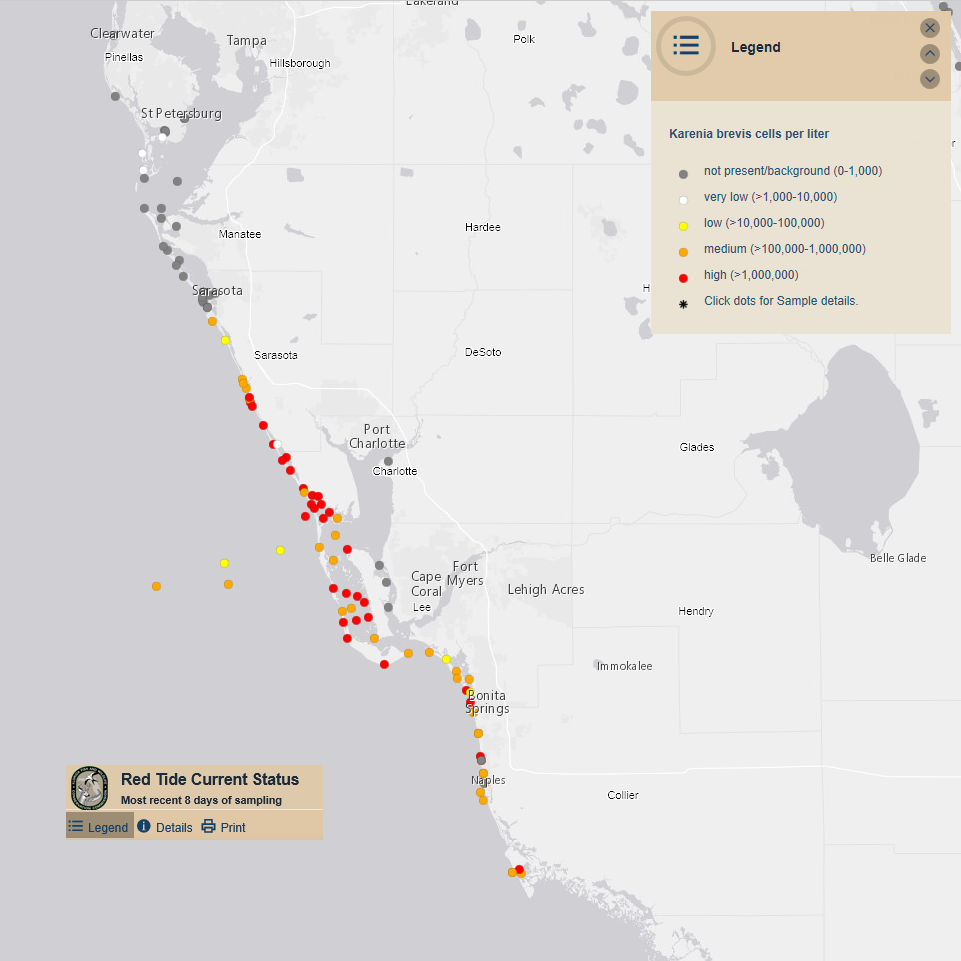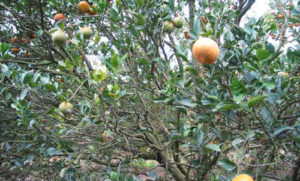Growing citrus devastation, water quality, algae
Florida’s annual red tide has returned to the west coast as the legislature begins hearing recommendations on how to tackle the state’s perennial blue-green algae problem on inland waterways and the coasts of Southeast and Southwest Florida. The public now has a new website to better monitor water quality, while an ongoing threat could ruin the citrus industry.

Red Tide Status as of November 17, 2019, Courtesy Fla. Fish & Wildlife Conservation Commission
Red Tide: The red tide organism Karenia brevis is showing up in higher concentrations now along southwest Florida beaches. The naturally-occurring algae normally presents from October through January. The last outbreak stuck around for 16 months and didn’t dissipate until this past February, after killing tons of sea life and creating a smelly mess on Gulf coast beaches. The Florida Fish and Wildlife Conservation Commission’s current water sampling map shows high concentrations from Venice south to Bonita Springs. So far, Sarasota County north through Pinellas County show no or only background quantities.
Blue-Green Algae: The Senate Environment and Natural Resources Committee heard recommendations issued by a state task force last month on how to fight Florida’s other toxic algae problem. Tests this summer around Lake Okeechobee, the source of blue-green algae blooms in waterways on both sides of Lake Okeechobee leading to the east and west coasts (specifically the St. Lucie and Caloosahatchee Rivers), revealed levels of toxins three to seven times too toxic to touch. As goes water quality, so goes home values and property insurance opportunities.
The Governor last month announced legislative reforms based on the task force report that he’ll pursue to improve water quality. They include tightening rules on wastewater and stormwater systems, more frequent inspections of farms, and better compliance with best practices to prevent runoff.
Water Quality Website: One of the big complaints about both red and blue-green algae blooms has been from the public in not knowing what waterways are affected and the real and potential impacts to health. To address location issues, the state has rolled out a new website, ProtectingFloridaTogether.gov which provides information on red tide and blue-green algae blooms, as well as key environmental projects. It covers all of Florida’s major lakes, waterways, and coastline. Critics say the data is old and misleading.

Asian citrus psyllid (Citrus Greening), Courtesy University of Florida
Citrus Greening: Research continues at an accelerated pace to figure out how to stem the rapidly accelerating effects of citrus greening, a lethal disease to Florida’s number 2 industry: citrus crops. A Chinese bacterium spread by a Chinese insect are to blame for the spread, which has reduced the number of citrus farmers from more than 7,000 in 2004, to about 2,000 today. The Florida Department of Citrus says greening “has decimated the state’s iconic industry.”
Energy Savings Program: The Florida Public Service Commission has voted to keep the state’s longtime consumer energy efficiency program intact, rejecting a proposal by utilities to shelve it. The program since 1980 has allowed utilities to conduct free home energy audits and provide incentives for better insulation and other energy-saving products to homeowners. The Commission determined the program itself doesn’t need changing, simply how its success is measured, and promised further study.
LMA Newsletter of 11-21-19

